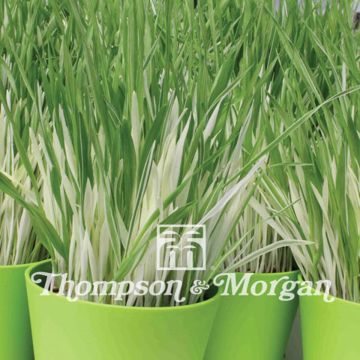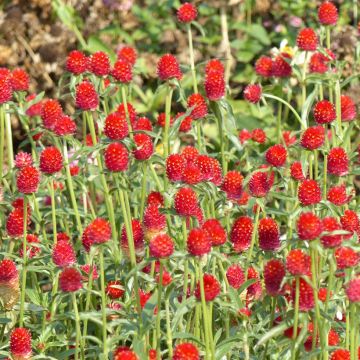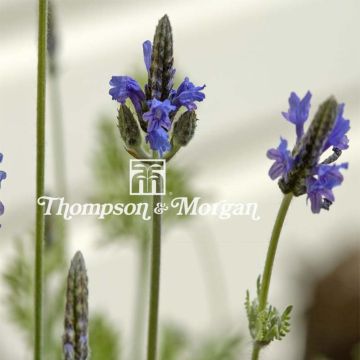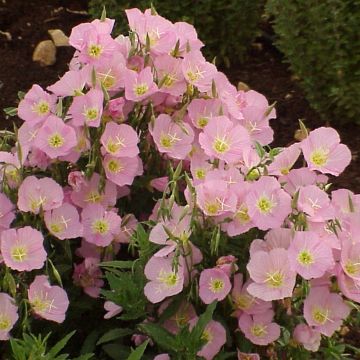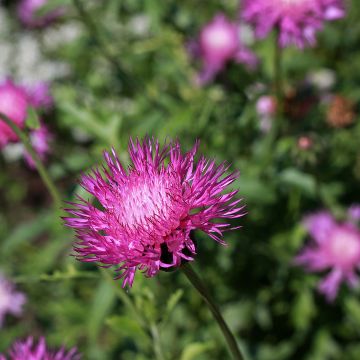

Polyanthus Large Flowered Mixed Seeds - Polyanthus Primrose Mix
Polyanthus Large Flowered Mixed Seeds - Polyanthus Primrose Mix
Primula vulgaris x veris Large Flowered Mixed
Hybrid Primrose
2 trials with 2 packets but only two or three seeds have sprouted.
S. , 23/06/2018
This item cannot be shipped to the selected country
Dispatch by letter from €3.90
More information
Schedule delivery date,
and select date in basket
This plant carries a 6 months recovery warranty
More information
We guarantee the quality of our plants for a full growing cycle, and will replace at our expense any plant that fails to recover under normal climatic and planting conditions.
Seed-only orders are dispatched by sealed envelope. The delivery charge for seed-only orders is €3.90.
Does this plant fit my garden?
Set up your Plantfit profile →
Description
The Polyanthus primroses in this mix, also called Primula polyanthus Large Flowered Mixed, are among the prettiest spring flowering plants. They are robust perennials, often grown as bi-annuals, that produce onwards from the end of winter, a profusion of large flowers in a very wide range of colours from white to cream and yellow to orange and purple, on top of semi-evergreen foliage arranged in rosettes.
Primula of the Polyanthus group or Primula x polyantha are hybrids derived from different species (P. eliator, juliae, veris and vulgaris), native from many temperate regions of the Northern Hemisphere. These perennials belong to the large family of Primulaceae which consists of about 400 species. The Large Flowered Mixed selection is made up of plants measuring 25 cm tall and wide that form 10 to 20 cm rosettes with veined, slightly wrinkled, dark green, evergreen or semi evergreen leaves. They flower in March-April. The flowers are grouped in umbels of 3 to 15 flowers with yellow or contrasting centres, carried by thick stems, and display a wide variety of colours.
Primrose is versatile and really easy to grow, even if it sometimes disappears because of dry summers or severe frosts. It deserves to be in every garden. Colourful, abundantly flowering and very cheerful, it marks the return of spring. Planted in flowerbed borders or window boxes on a balcony, these small plants are ideal companions for tulips and forget-me-nots. They are ideal in borders, low-lying beds under the cover of broad-leaved trees, in rock gardens and lawns, planted among snowdrops and violets. The leaves and flowers are edible and can be eaten raw or cooked.
Report an error about the product description
Flowering
Foliage
Plant habit
Botanical data
Primula
vulgaris x veris
Large Flowered Mixed
Primulaceae
Hybrid Primrose
Cultivar or hybrid
Other Thompson and Morgan seeds
Planting and care
Plant primroses in the morning sun or in partial shade, in well-drained but fertile, humus-rich soil. These plants do not fare well in soil that dries in summer or soil that is waterlogged in winter. Water well in the weeks following transplanting, especially in dry weather, to ensure their recovery. Regular watering in the summer will also be necessary in case of extreme heat and drought. These easy-to-grow plants will not need any special care apart from the removal of wilted flowers and leaves.
Growing in a pot:
Remember to improve drainage at the bottom of the container by putting a layer of gravel, shards of earthen pots, or clay pebbles to facilitate the evacuation of water and avoid asphyxiation of the roots. A mixture of leaf compost and garden soil will do the job just fine.
Place the pot in partial shade or in the sun and water regularly to keep the soil always slightly moist to sustain flowering. Every two week, add a little fertilizer for flowering plants to the irrigation water and remove faded flowers to extend the flowering period.
Sowing period
Intended location
-
, onOrder confirmed
Reply from on Promesse de fleurs
Flower seeds
Haven't found what you were looking for?
Hardiness is the lowest winter temperature a plant can endure without suffering serious damage or even dying. However, hardiness is affected by location (a sheltered area, such as a patio), protection (winter cover) and soil type (hardiness is improved by well-drained soil).

Photo Sharing Terms & Conditions
In order to encourage gardeners to interact and share their experiences, Promesse de fleurs offers various media enabling content to be uploaded onto its Site - in particular via the ‘Photo sharing’ module.
The User agrees to refrain from:
- Posting any content that is illegal, prejudicial, insulting, racist, inciteful to hatred, revisionist, contrary to public decency, that infringes on privacy or on the privacy rights of third parties, in particular the publicity rights of persons and goods, intellectual property rights, or the right to privacy.
- Submitting content on behalf of a third party;
- Impersonate the identity of a third party and/or publish any personal information about a third party;
In general, the User undertakes to refrain from any unethical behaviour.
All Content (in particular text, comments, files, images, photos, videos, creative works, etc.), which may be subject to property or intellectual property rights, image or other private rights, shall remain the property of the User, subject to the limited rights granted by the terms of the licence granted by Promesse de fleurs as stated below. Users are at liberty to publish or not to publish such Content on the Site, notably via the ‘Photo Sharing’ facility, and accept that this Content shall be made public and freely accessible, notably on the Internet.
Users further acknowledge, undertake to have ,and guarantee that they hold all necessary rights and permissions to publish such material on the Site, in particular with regard to the legislation in force pertaining to any privacy, property, intellectual property, image, or contractual rights, or rights of any other nature. By publishing such Content on the Site, Users acknowledge accepting full liability as publishers of the Content within the meaning of the law, and grant Promesse de fleurs, free of charge, an inclusive, worldwide licence for the said Content for the entire duration of its publication, including all reproduction, representation, up/downloading, displaying, performing, transmission, and storage rights.
Users also grant permission for their name to be linked to the Content and accept that this link may not always be made available.
By engaging in posting material, Users consent to their Content becoming automatically accessible on the Internet, in particular on other sites and/or blogs and/or web pages of the Promesse de fleurs site, including in particular social pages and the Promesse de fleurs catalogue.
Users may secure the removal of entrusted content free of charge by issuing a simple request via our contact form.
The flowering period indicated on our website applies to countries and regions located in USDA zone 8 (France, the United Kingdom, Ireland, the Netherlands, etc.)
It will vary according to where you live:
- In zones 9 to 10 (Italy, Spain, Greece, etc.), flowering will occur about 2 to 4 weeks earlier.
- In zones 6 to 7 (Germany, Poland, Slovenia, and lower mountainous regions), flowering will be delayed by 2 to 3 weeks.
- In zone 5 (Central Europe, Scandinavia), blooming will be delayed by 3 to 5 weeks.
In temperate climates, pruning of spring-flowering shrubs (forsythia, spireas, etc.) should be done just after flowering.
Pruning of summer-flowering shrubs (Indian Lilac, Perovskia, etc.) can be done in winter or spring.
In cold regions as well as with frost-sensitive plants, avoid pruning too early when severe frosts may still occur.
The planting period indicated on our website applies to countries and regions located in USDA zone 8 (France, United Kingdom, Ireland, Netherlands).
It will vary according to where you live:
- In Mediterranean zones (Marseille, Madrid, Milan, etc.), autumn and winter are the best planting periods.
- In continental zones (Strasbourg, Munich, Vienna, etc.), delay planting by 2 to 3 weeks in spring and bring it forward by 2 to 4 weeks in autumn.
- In mountainous regions (the Alps, Pyrenees, Carpathians, etc.), it is best to plant in late spring (May-June) or late summer (August-September).
The harvesting period indicated on our website applies to countries and regions in USDA zone 8 (France, England, Ireland, the Netherlands).
In colder areas (Scandinavia, Poland, Austria...) fruit and vegetable harvests are likely to be delayed by 3-4 weeks.
In warmer areas (Italy, Spain, Greece, etc.), harvesting will probably take place earlier, depending on weather conditions.
The sowing periods indicated on our website apply to countries and regions within USDA Zone 8 (France, UK, Ireland, Netherlands).
In colder areas (Scandinavia, Poland, Austria...), delay any outdoor sowing by 3-4 weeks, or sow under glass.
In warmer climes (Italy, Spain, Greece, etc.), bring outdoor sowing forward by a few weeks.


































